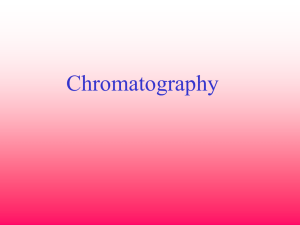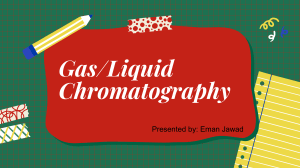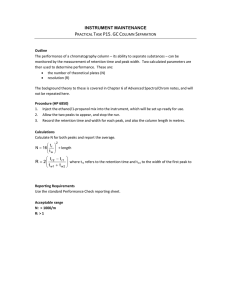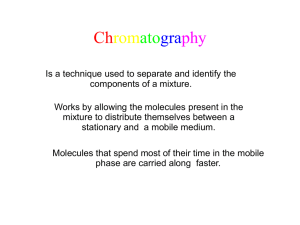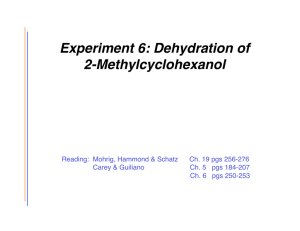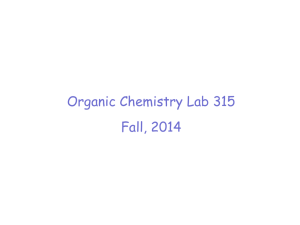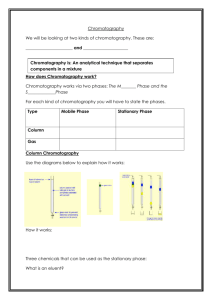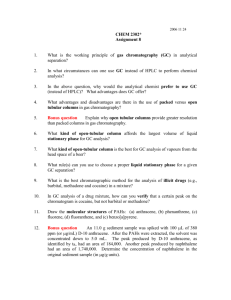CHM 265
advertisement
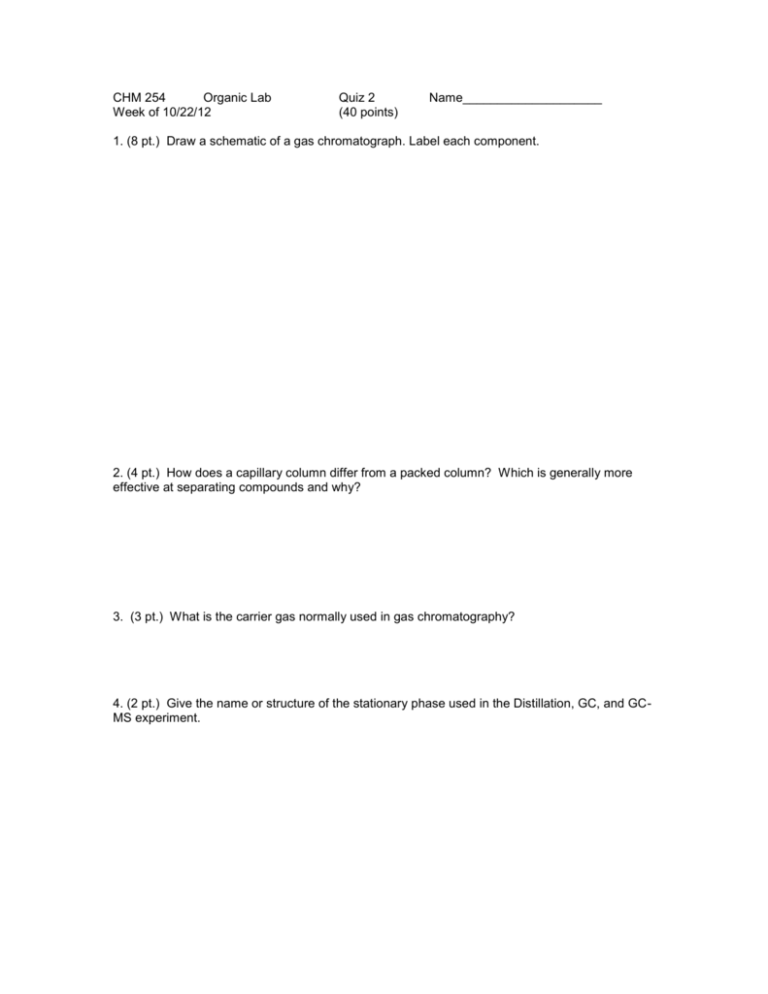
CHM 254 Organic Lab Week of 10/22/12 Quiz 2 (40 points) Name____________________ 1. (8 pt.) Draw a schematic of a gas chromatograph. Label each component. 2. (4 pt.) How does a capillary column differ from a packed column? Which is generally more effective at separating compounds and why? 3. (3 pt.) What is the carrier gas normally used in gas chromatography? 4. (2 pt.) Give the name or structure of the stationary phase used in the Distillation, GC, and GCMS experiment. 5. (3 pt.) There are three isomers of the aromatic hydrocarbon known as xylene. Based on the b.p. provided, what would be their order of retention times in GC from shortest to longest? Name b.p. o-xylene 143-145 m-xylene 136 p-xylene 137-138 6. (3 pt.) The b.p. of 1-chlorobutane and 1-bromobutane are 78.5C and 101.3C respectively. Can they be effectively separated by simple distillation? 7. (4 pt.) Considering the below two component liquid mixture phase diagram, answer the following questions: a. What are the boiling points of A and B, respectively? 120 110 Temperature 100 90 80 b. What is a molar composition of distillate if a mixture of 80% A and 20% B has been distilled? Show your work on diagram. 70 60 A 0% 100% 20% 40% 60% 80% 80% 60% 40% 20% 100% 0% B 8. (3 pt.) What is the general term for the stationary phase such as silica gel called in column chromatography? 9. (8 pt.) The mass spectrum provided is of one of the five compounds listed. Which one is it? Explain. Note that there is an observable M+1 peak. You do not need to know the structure. The molecular formulas are provided. Indicate which peaks are the base peak, the molecular ion, and the M+1 peak. If you are unsure of what the m/z is for the peak, you may ask. Compounds Formula Atom Atomic masses (amu) Toluene Ethylbenzene Ethoxybenzene Propylbenzene Propoxybenzene C7H8 C8H10 C8H10O C9H12 C9H12O C H O 12.0000 1.00783 15.9949 91 92 45 65 51 10. (2 pt.) What defects in the stationary phase of column chromatography can cause the compound bands to overlap?

